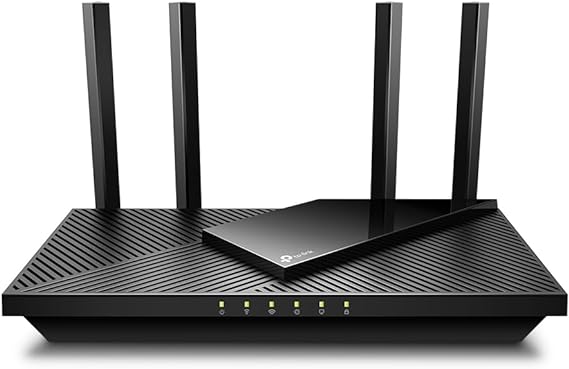📋 Table of Contents:
Rescuing Your Digital Treasures: The Ultimate Guide to Hard Drive Failure Recovery
In a world saturated with digital data holding our precious memories, critical work, and sensitive information, the hard disk drive (HDD) or solid-state drive (SSD) remains a silent yet fragile guardian. Its sudden failure isn’t just a technical hiccup—it’s a potential catastrophe. The good news? Recovering data from failed drives is often possible. This definitive guide equips you with actionable strategies to diagnose, address, and salvage your data.
Chapter 1: Roots of Disaster – Why Do Hard Drives Fail?
Understanding failure causes is the first step toward solutions:
Mechanical Failure (HDDs):
Spindle Motor Failure: The motor spinning platters seizes.
Head Crash: Read/write heads scrape magnetic platters (caused by physical shock, wear, or contamination).
Actuator Arm Failure: The arm holding heads malfunctions.
PCB (Circuit Board) Failure: Power surges or overheating damage control electronics.
Electronic Failure (HDDs/SSDs):
PCB Damage: Burnt components or short circuits.
Firmware Corruption: Critical drive software becomes unreadable.
Controller Failure (Common in SSDs): The SSD’s internal processor fails.
Logical Failure (HDDs/SSDs):
File System Corruption: Data mapping tables (NTFS, APFS, etc.) are damaged (e.g., by sudden power loss or malware).
Accidental Deletion/Formatting: Human error.
Malware/Ransomware: Encryption or data destruction.
Bad Sectors: Unreadable disk areas (soft = fixable; hard = physical damage).
External Factors:
Physical trauma (drops, water exposure), extreme temperatures, humidity, dust, or power fluctuations.
Chapter 2: Warning Signs – Is Your Drive Dying?
Heed these symptoms to act early:
Strange Noises (HDDs): Clicking, grinding, screeching, or repeated spin-up/spin-down cycles.
Severe Slowdown: Long file access times, system freezes.
Frequent Errors: "Disk Not Initialized," "Access Denied," "S.M.A.R.T. Failure Predicted."
Vanishing Files: Disappearing folders or corrupted files.
Boot Failure: OS won’t load.
System Crashes: Blue screens (BSOD) during disk access.
Undetected Drive: Not visible in BIOS/UEFI or Disk Management.
Chapter 3: First Aid – Immediate Actions After Failure
Act swiftly to avoid irreversible damage:
Power Off Immediately: Continued operation worsens physical damage.
Never Run "Repair" Tools (e.g., chkdsk): They overwrite recoverable data.
Avoid Formatting/Re-partitioning: Erases recovery chances.
Don’t Open HDD Casings: Internal components require ISO-certified cleanrooms.
Disconnect the Drive Safely: Remove it from your device.
Ignore the "Freeze the Drive" Myth: Condensation causes further harm.
Assess the Situation: Note recent events (e.g., power outage, impact).
Prepare for Recovery:
For DIY: Secondary PC, SATA-to-USB adapter, new external storage.
For Pros: Research reputable data recovery firms.
Chapter 4: Recovery Roadmap – DIY Tools to Cleanroom Solutions
A. DIY Recovery (Logical Failures Only)
Top Software Tools:
R-Studio: Advanced, supports complex cases & diverse file systems.
GetDataBack Pro: Excellent for file system corruption.
EaseUS Data Recovery Wizard: User-friendly for beginners.
Disk Drill: Intuitive interface + extra tools.
Stellar Data Recovery: All-in-one solution.
Critical Steps:
Install software on a separate healthy drive (not the failed one!).
Connect failed drive externally.
Scan the drive (may take hours).
Preview recoverable files.
Save recovered data to a different drive (never the original!).
B. Professional Recovery (Mechanical/Electronic Failures or DIY Failure)
When to Seek Pros:
Clicking/grinding sounds (HDD).
Drive undetected in BIOS.
Physical damage (water, fire, impact).
Critical data with zero tolerance for loss.
The Professional Process:
Diagnosis: Free evaluation + cost estimate (no recovery, no fee).
Cleanroom Work (HDDs): Component repair/replacement in particle-free ISO 5 environments.
Drive Imaging: Bit-for-bit copy to a healthy donor drive.
Data Extraction: Advanced tools rebuild file structures.
Delivery: Data provided on new storage media.
Choosing a Reliable Service:
Check reviews, years in business, and success stories.
Demand transparency: no upfront fees before diagnosis.
Verify ISO-certified cleanrooms (ask for certification).
Ensure "No Data, No Fee" policy.
Chapter 5: Prevention – Your Data’s Best Defense
Avoid disaster with proactive measures:
Follow the 3-2-1 Backup Rule:
3 copies of data.
2 storage types (e.g., internal + external drive).
1 off-site copy (cloud or physical location).
Tools: Time Machine (macOS), File History (Windows), Backblaze, Acronis.
Test restores quarterly!
Handle Drives Gently:
Avoid shocks/vibrations (especially during HDD operation).
Ensure proper ventilation to prevent overheating.
Use "Safely Remove Hardware" for external drives.
Connect via UPS (uninterruptible power supply).
Monitor Drive Health:
Use S.M.A.R.T. analysis tools (CrystalDiskInfo for Windows, DriveDx for Mac).
Replace drives preemptively: HDDs every 3–5 years, SSDs every 5–10 years.
Combat Malware: Updated antivirus software + cautious browsing.
Chapter 6: Costs & Realistic Expectations
DIY Software: $50–$150 (free trials allow previews).
Professional Services:
Logical failures: $300–$1,000+.
Physical failures: $700–$3,500+ (cleanroom work adds cost).
Warranty Note: Manufacturers replace drives, not recover data.
Success Rates:
Logical errors: Up to 100% if no overwriting occurred.
Severe physical damage: As low as 30–50%.
Conclusion: Knowledge Is Your Greatest Shield
Drive failure is common, but panic and mishandling turn hiccups into tragedies. By recognizing failure symptoms, applying emergency best practices, understanding recovery options (from software to cleanrooms), and enforcing rigorous backups, you transform vulnerability into resilience. Remember: Your data is priceless. Investing in its protection isn’t optional—it’s safeguarding your digital legacy. Don’t wait for disaster. Protect your treasures today.








.jpg)